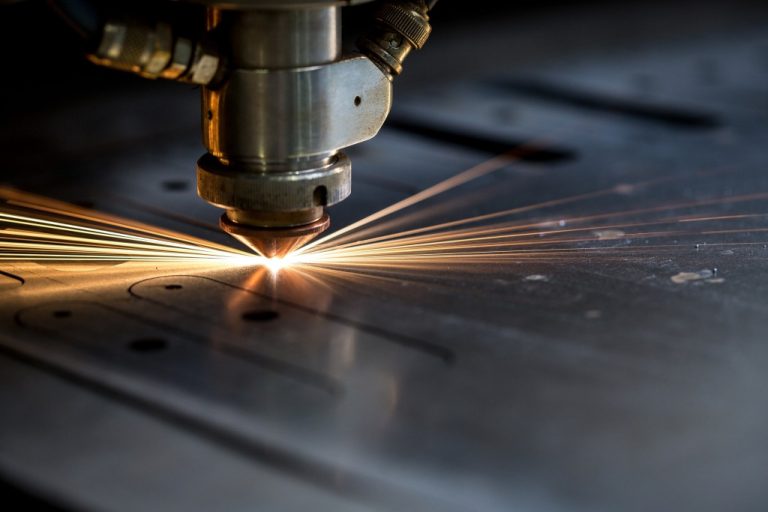• Albert Einstein theorized the idea of “Stimulated Emission” in 1917, which was proven 30 years later by Willis Lamb using microwave radiation.
• Charles Townes and Arthur Schawlow created the first working laser in 1960 at the Hughes Research Laboratory.
• Lasers are now used for medical treatments, industrial applications, entertainment, and leisure activities.
• They have revolutionized metalwork, logistics and warehousing, automotive manufacturing, and agriculture.
• The modern business world utilizes lasers to increase efficiency, accuracy, and productivity. As technology advances further, so will the capabilities of these tools for businesses.
The invention of the laser was a breakthrough in science and technology that has contributed to the advancement of numerous industries. Its use as a tool in medicine, engineering, and even entertainment has revolutionized the world today. But do you know how the history behind this invention? Here’s a look into lasers and how they have revolutionized today’s business world.
What Are Lasers?
Lasers are devices that produce an intense beam of light. This light is formed when atoms or molecules within a material are stimulated to emit photons, forming a coherent stream of light with powerful properties. The most common types of lasers available today are gas, solid-state, semiconductor, and free electron lasers (also known as FEL). Here’s the history behind this invention.
The Beginning
In 1917 Albert Einstein theorized about the concept of “Stimulated Emission” whereby a photon passing through an excited substance, and through the process of oscillation or natural vibrations could prompt the substance to release an equal photon. Einstein’s theories were put to the test 30 years later, in 1947, when American physicist Willis Lamb succeeded in proving the process with microwave radiation, and paved the way for his colleague Charles Townes and his brother-in-law Arthur Schawlow, to pioneer the creation of the first laser in 1960.
The Laser at Work
Charles Townes and Arthur Schawlow are credited with conceiving the idea of the optical laser in 1958. In 1960, these inventors unveiled the first working laser at the Hughes Research Laboratory in Malibu, California. The initial laser was designed as an instrument for research, but as technology advanced over the past few decades, its uses expanded to include manufacturing, entertainment, medicine, and communication.

Medical Impact
The use of lasers in medicine dates back to the 1960s when research was conducted on their effects on the retina of the eye, and the first laser surgery was performed in 1961. Today, lasers are used in various medical fields, from helping eradicate cancerous tumors to removing tattoos to improving eyesight with refractive surgeries.
Industrial Applications
The industrial sector is another field that utilizes the power of lasers. From printing, welding, and cutting metals, to etching designs onto electronic devices or conducting surgery on hard-to-reach components, industrial laser technology has become an essential tool in modern manufacturing processes.
Entertainment and Leisure
In recent years, people have witnessed the evolution of lasers as a medium for entertainment. Lasers have been employed to transform concerts into immersive light shows, where the striking visual effects are almost as crucial as the music itself. Theme parks have started using lasers in their attractions too, offering an “out of this world” experience with laser mazes, laser tag, and laser light shows.
Lasers and the World of Business
Various industries in the business world are also now utilizing lasers to improve efficiency and keep up with the ever-changing demands of the modern world. Laser technology is being used for various purposes. Here are some industries affected by the evolution of lasers:
Metalwork
One essential sub-industry of construction is metalwork. Lasers are now used in metal fabrication, from simple sheet-cutting jobs to more complex 3D sculpting and engraving. Also, custom metal laser cutters have made creating components more efficient, as they can make precise cuts with little manual labor. They are far better and safer than cutting metals through the traditional way.
Logistics and Warehousing
Lasers are employed in the logistics industry to streamline packaging and labeling automation processes. Additionally, lasers are used in warehouse management systems to track inventory levels which helps ensure accuracy and speed.

Automotive Manufacturing
Lasers have found their way into the automotive industry, with laser-equipped robotic arms now being used to weld car parts. These robots are faster and much more precise than manual labor alone can provide. Lasers are also used in laser cutting and engraving of automotive components for better accuracy and quality control.
Agriculture
Laser technology has been used for agricultural purposes as well. For example, laser-guided harvesting machines can be programmed to detect and pick crops faster than manual labor. Lasers are also being employed in robotic milking systems that help increase milk production by collecting data from sensors on the cows’ udders.
Lasers have become essential in various industries, from medical to manufacturing. They are an invaluable tool for increasing efficiency, accuracy, and productivity in the modern business world. As technology continues to evolve and advance, so will the capabilities of lasers and the businesses that use them.

